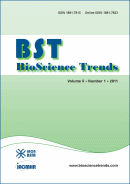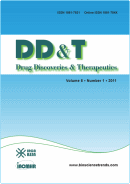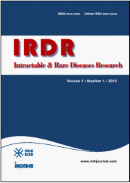BioScience Trends. 2025;19(1):102-115. (DOI: 10.5582/bst.2024.01360)
N5-((perfluorophenyl)amino)glutamine regulates BACE1, tau phosphorylation, synaptic function, and neuroinflammation in Alzheimer's disease models
Kim JS, Cho Y, Lee J, Cho H, Han S, Lee Y, Jeon Y, Kim TK, Hong JM, Im J, Chae M, Lee Y, Kim H, Park SY, Kim SH, Yim JH, Jo DG
Alzheimer's disease (AD) is the most common type of dementia. Its incidence is rising rapidly as the global population ages, leading to a significant social and economic burden. AD involves complex pathologies, including amyloid plaque accumulation, synaptic dysfunction, and neuroinflammation. This study explores the therapeutic potential of N5-((perfluorophenyl)amino)glutamine (RA-PF), a derivative of γ-glutamyl-N'-(2-hydroxyphenyl)hydrazide (Ramalin), a compound with antioxidant and anti-inflammatory properties. Administration of RA-PF to 5xFAD mice decreases BACE1, reduces Aβ plaque deposition, inhibits microglial activation, restores synaptic transmission, and improves mitochondrial motility, leading to the recovery of cognitive function. Additionally, RA-PF treatment in 3xTg-AD mice alleviates anxiety-like behaviors, tau phosphorylation via inactivating GSK-3β, and BACE1 expression. Further transcriptomic analysis reveals RA-PF treatment in AD mice models recovers phagosome, inflammation, NOD-like receptor, presynaptic membrane, and postsynaptic membrane related signaling pathways. These findings suggest that RA-PF effectively targets multiple aspects of AD pathology, offering a novel multi-target approach for AD treatment.







